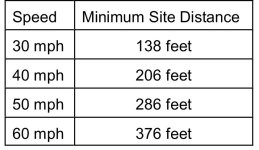Journeyman
"And this one is just right" ~ Goldilocks
Good advice, as always @1olbull . The standard advice it to hang wide so you can see far up ahead, but at speed in tight turns you will not have enough time to get out of the way by the time you see these kinds of scenarios. Slowing down (that's the hard one, isn't it?) and staying closer to the right (in a tight right turn) is probably the best choice. Slinging these big beasts over while in a sharp lean angle, quickly, is better said than done.Please allow me to hop on the soapbox . . .
First off, Good riding! You have well illustrated a very important danger of riding the twisties!
Right hand twisties are more dangerous than lefties and they deserve MORE caution, especially when on the hoon.
Riding a delayed apex is the fastest way 'round. On right handers this sadly will bring you out near the center line and set you up for the careless cage, or motor driver that has chosen to lengthen his radius and compensate for his excessive speed by covering or crossing the center line.
Many years ago, after experiencing a few close calls, I have wised up and reduced the entrance speed of my right hand hoon in order to maintain a 4 to 5 feet clearance to the center line.
At the risk of overextending my soapbox time, I must also point out that a motor rider should always allow enough site distance when approaching/entering a curve so he can stop or avoid a unexpected hazard in his path of travel.
While riding, when you can identify an object that defines your maximum site distance count the time it takes to reach it at your current speed. "One - one thousand, two - one thousand, . . ." and so on works pretty well for me. Once you have this time estimated, apply to this chart:

Anyone interested in how this was done, just ask.
Wide angle videos don't show these situations well. Although the first two I've posted (I welcome contributions here from others) were far from soiling my britches, about 1/2 second more inattentiveness on these driver's parts changes things exponentially. Relying on THEM to snap out of their smart phone induced zombie izzm, or just general stupidity, is what makes riding, as we all know, a constant challenge.


